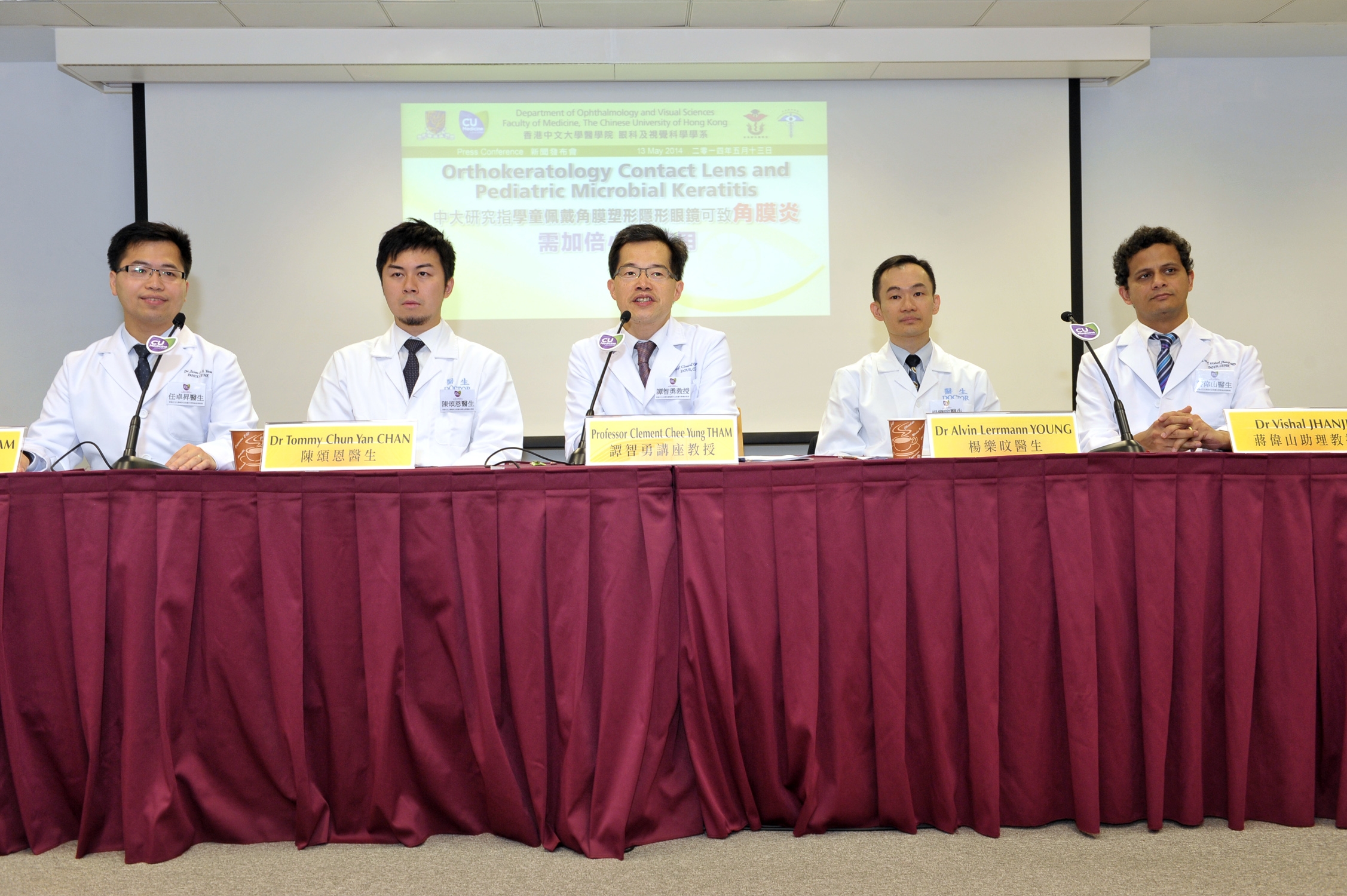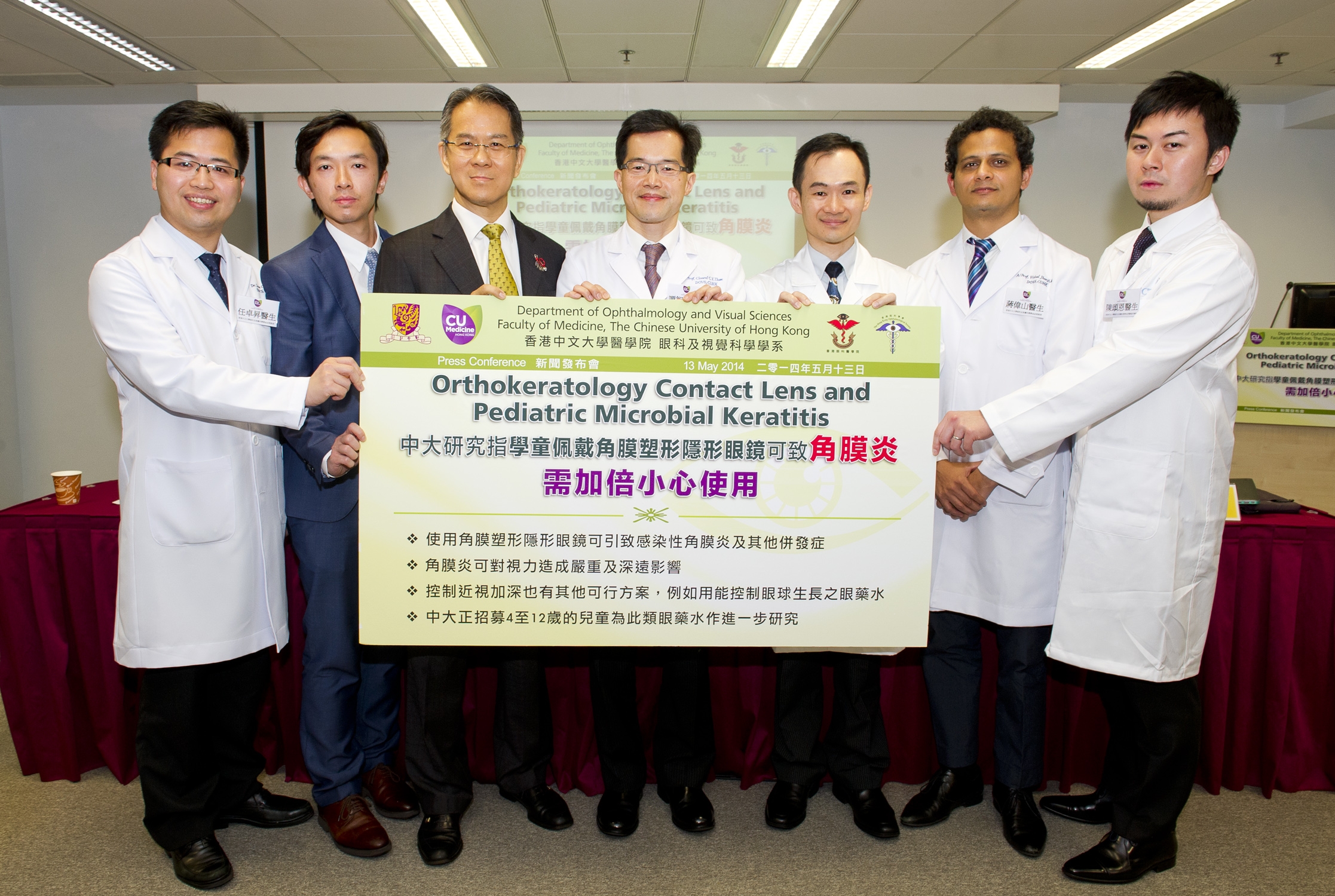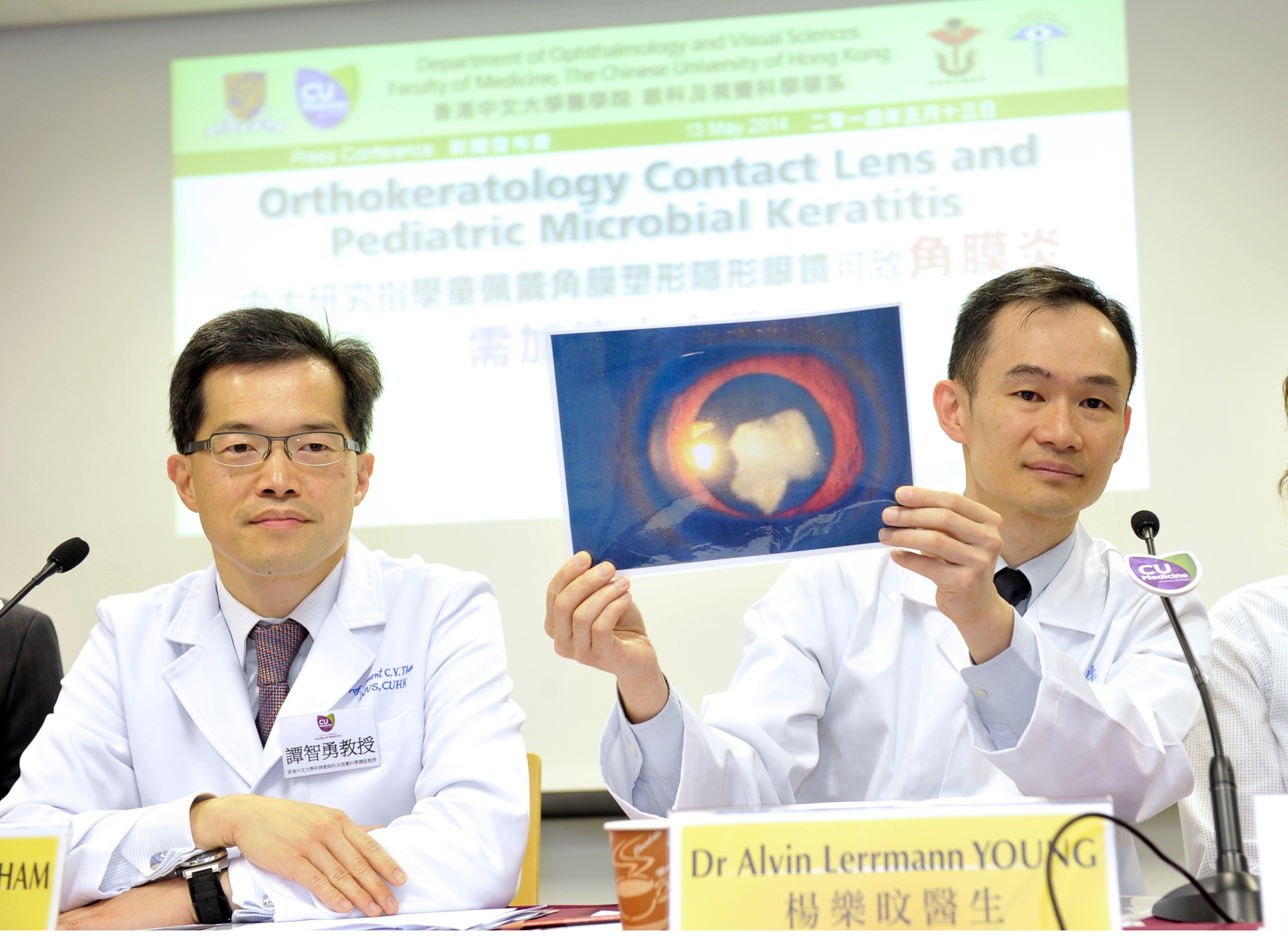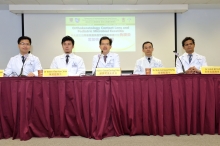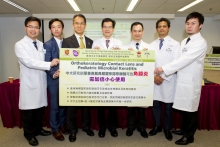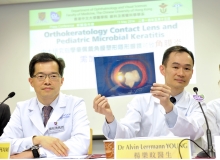CUHK
News Centre
CUHK Research Reveals Use of Ortho-K Lens a Major Risk Factor for Microbial Keratitis among School Children
The Department of Ophthalmology & Visual Sciences at The Chinese University of Hong Kong (CUHK) has investigated cases in the past 10 years in which patients aged at or below 18 were diagnosed with microbial keratitis, a corneal disease that can result in irreversible visual loss, or even blindness. Results indicated that about 40% of the cases were directly related to the use of Orthokeratology (Ortho-K) lens – corneal reshaping lenses that are used to control myopia – reflecting the potential risk of using such lenses. The CUHK research team is currently recruiting 500 children aged 4-12 for a large-scale study on the effectiveness and safety of the drug Atropine (an ophthalmic eye drop) in controlling myopia progression.
Hong Kong is one of the places in the world with the highest prevalence of shortsightedness (or myopia). Over 50% of children aged below 12 suffer from shortsightedness[1], and it is estimated that the total number of myopic children may reach 400,000, according to the figures from the Census and Statistics Department in 2012[2]. Ortho-K is one of the options to temporarily control myopia in children by fitting rigid permeable contact lenses on the cornea to shape its curvature. Persistent overnight use of Ortho-K is required for desirable therapeutic outcome as its effect is short-lasting (i.e 1-2 days). Direct contact between the cornea and the lens increases the risk of microbial keratitis, especially if cleaning and hygiene measures are not strictly adhered to.
Microbial keratitis can result in irreversible visual loss, or even blindness. Under normal circumstances, corneal epithelial cells can protect the eyes against infection. Dr. Alvin L. YOUNG, Clinical Associate Professor (Honorary), Department of Ophthalmology & Visual Sciences, CUHK, pointed out that wearing Ortho-K might cause abrasions on corneal epithelial layer, thus weakening the cornea. ‘There is an increased susceptibility to bacterial infection at the site of abrasion if proper cleaning and hygiene measures are not adopted when using Ortho-K. If treatment is delayed, irreversible corneal scarring, endophthalmitis, or corneal perforation, may occur, resulting in devastating effects in the long-run.’
The CUHK research team has investigated cases in the past 10 years in which patients aged at or below 18 were diagnosed with microbial keratitis. Results showed that about 38% of the cases were directly related to the use of Ortho-K. The research team also collected 10 years’ data from the Hong Kong Eye Hospital and analysed 23 cases with corneal infection caused by the use of Ortho-K. It was found that the patients were at a mean age of 15 and required 15 days of hospitalization on average. 100% of the patients suffered from permanent corneal scar leading to irreversible visual impairment. Some cases even require corneal transplantation surgery.
Prof. Clement THAM, S.H. HO Professor of Ophthalmology & Visual Sciences, CUHK, said, ‘Parents should consult an eye doctor to discuss the various treatment options for controlling myopia in their children, and should have a clear understanding of the efficacy and safety of each of these options before making a choice. One should seek immediate medical consultation, if the child has any symptoms suggestive of corneal infection, such as acute ocular pain and redness, decreased vision, photophobia, and watery eyes. Timely treatment can reduce the risk of permanent visual impairment.’
Atropine eye drop is aother treatment option to slow down myopia progression by modulating the growth of sclera, through paralysing ciliary muscles and dilation of the pupil. Atropine usage at the usual concentration may bring side effects such as sensitivity to bright light and blurred vision. However, latest research has shown a reduction of side effects at lower concentrations of Atropine. The CUHK research team is now launching a large-scale research on the efficacy and safety of Atropine, and recruiting 500 participants aged between 4 and 12. Interested parties please contact CUHK (Tel: 3943-5869 / Email: ovs.atropine@cuhk.edu.hk) or visit www.ovs.cuhk.edu.hk/atropine for more information.
[1]Fan DS, Lam DS, Lam RF, Lau JT, Chong KS, Cheung EY, Lai RY, Chew SJ. Prevalence, incidence, and progression of myopia of school children in Hong Kong. Invest Ophthalmol Vis Sci. 2004 Apr;45(4):1071-5.
Prof. Clement THAM (middle), S.H. Ho Professor of Ophthalmology & Visual Sciences; Dr. Jason YAM (1st left), Assistant Professor; Dr. Tommy CHAN (2nd left), Clinical Tutor (Honorary); Dr. Alvin YOUNG (2nd right), Clinical Associate Professor (Honorary); and Dr. Vishal JHANJI (1st right), Assistant Professor, Department of Ophthalmology & Visual Sciences at CUHK, share their latest findings on Ortho-K lens and pediatric microbial keratitis.
The CUHK research team and Dr. Jeffrey PONG (2nd left), Honorary Treasurer, Hong Kong Ophthalmological Society and Dr. CHOW Pak-chin (3rd left), President of The College of Ophthalmologists of Hong Kong, pose for a group photo.


